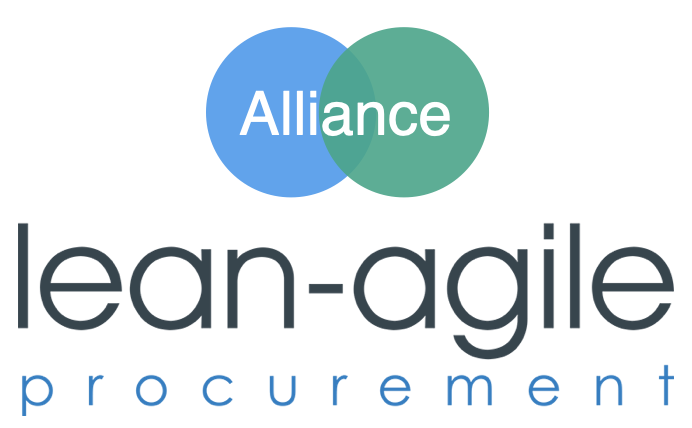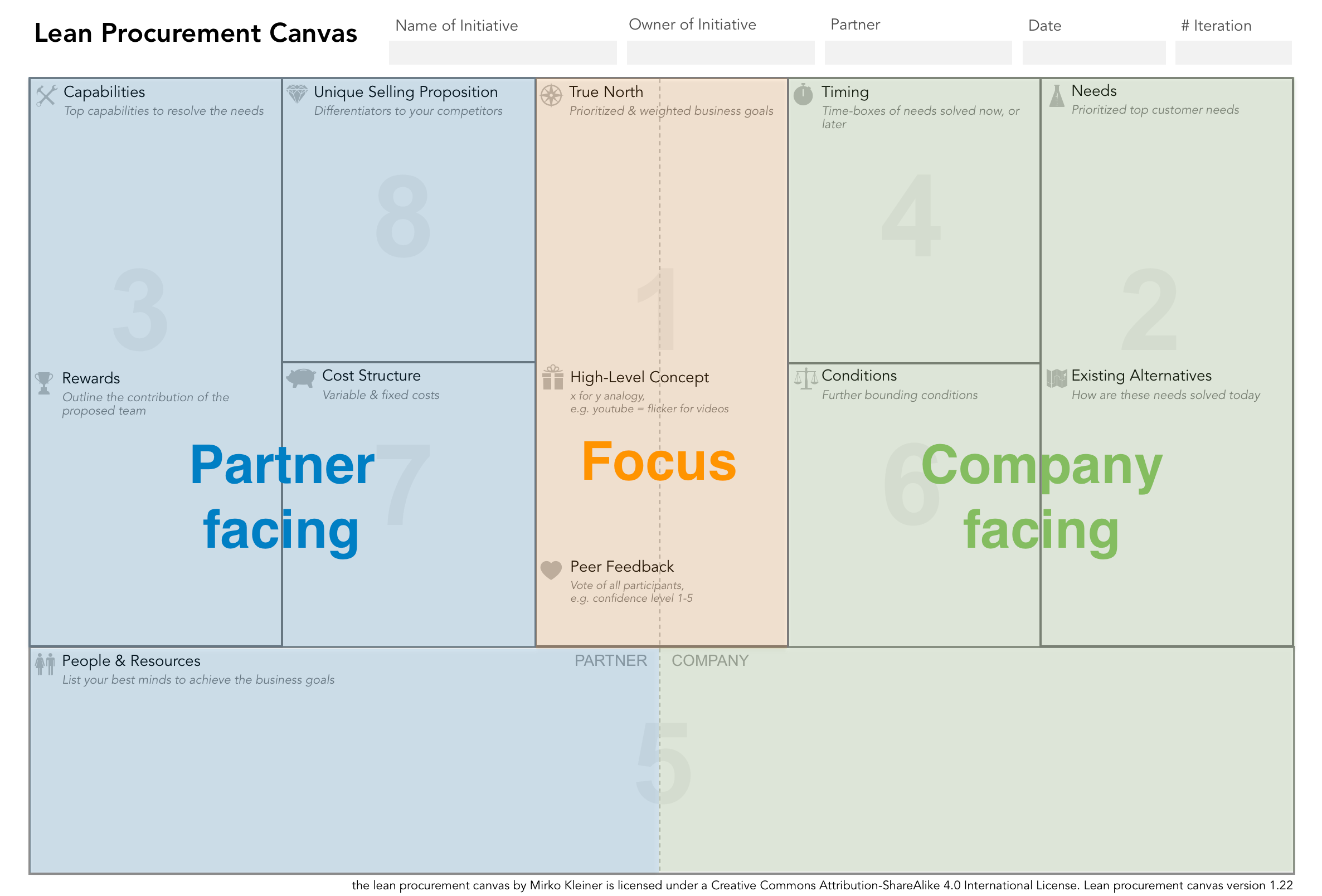Does the RfP Process need a MAJOR Upgrade - Episode 3: RfP 3.0 'Request for Participation'
Looking back in the history of the RfI/RfP process we see, that it’s source was developed in another time at the end of the 19th century. Of course the new channels like phone, email, web, etc. allowed new possibilities and increased efficiency. However the core of the process stayed nearly the same. Do we may be need a major upgrade after almost 120 years?
Lets have a look at the RfP 3.0, the request for participation and how this improves competitive advantage of buyers and suppliers.
Looking back in the history of the RfI/RfP process we see, that it’s source was developed in another time at the end of the 19th century. Of course the new channels like phone, email, web, etc. allowed new possibilities and increased efficiency. However the core of the process stayed nearly the same. Do we may be need a major upgrade after almost 120 years?
Lets have a look at the RfP 3.0, the request for participation and how this improves competitive advantage of buyers and suppliers.
<< Previous blog post: Does the RfP Process need a major Upgrade? - Episode 2: The Facts
Please note: This blog posts is focusing just on the RfP process. We are aware of the fact that modern procurement is much more than this. We hope you enjoy another perspective!
“Lean-agile procurement reduces and distributes risk through incremental and value-added funding for improved business outcomes.”
In previous blog post we’ve learned, that the RfP 2.0 doesn’t work with complex tenders . What we all assumed is underlined with facts. We can’t predict, nor estimate the unknown and so we can’t specify the scope without creating waste. We would need so much time for investigation, that we already could start probing iteratively. Furthermore, we’ve learned to focus to the end user/customer needs, constantly validate those and look for a future-proof partner instead of a predefined solution. If we don’t reinvent RfP 2.0 fundamentally we might loose more and more potential partners interest and with that we’ll also loose opportunity for unexpected innovations and so a potential competitive advantage.
All this leads us to the conclusion, that we need a major upgrade of the RfP, the RfP 3.0!-An upgrade, that fosters collaboration and innovation. We call it „Request for Participation“. But how does it look like?
The thing with trust
The fundament of a partnership is trust and transparency. Have you noticed?-We’ve said partnership instead of relationship, that’s the first fine but big change with RfP3.0. In an ideal world we would just choose a partner and start probing iteratively. Unfortunately, our current culture and believes are not yet there. So we need something in between. The funny thing with trust is, it works in both ways. This often gets forgotten. In other words we need to establish trust and reduce risks for both sides (buyer and partner) at the same time. Therefor we can create sophisticated agile contracts, that describe and handle collaboration, scope, timing, budget, quality, warranty, etc. Personally, I don’t believe in that way and I’m more with Marco Zoppi.
“If the customer is starting to quote from the contract the cooperation has just found it’s end”
Sure, we have to manage the basics in a contract, no doubt. But I’m a strong believer in the good idea of men (theory Y, source 1) and we should not punish the majority, because of some few bad theory X cases from the past. By the way, Niels Pflägin said: "There are NO X-er by default, the system / organisation makes them behave like X-er".
Source: Douglas McGregor, Theory X/Y
Instead we should find lean and agile cooperation models and -contracts, that are fair and foster trust by e.g.
- risk share
- bonus / money for nothing, if we achieve the goal/s earlier
- work / fund just stages, with the option of an early exit at any time
- partnering / open books / joint venture
- etc.
So that the partnership stays adaptive instead of fixed. In my opinion, that’s true agile contracting!-But that’s another story.
Paradigm changes
Currently agile is the only approach we know, to deal with complexity. Its built in approach of build <> measure <> learn brings us iteratively towards the right solution. For the RfP 3.0 this means, that in complex tenders for innovation, business services, ICT, etc. it makes no sense any more to think off solutions (features / functions) or wants in advance. Instead we need to focus on the customer needs and with whom we could solve them best. All this is a creative development, that we only could achieve in a participative approach. The potential partner and all stakeholders from both sides (business, executives, lawyer, buyer, customer / user, developer, etc) need to be involved at once. YES, that means we do this all together in ONE room. This allows both sides to align with the customer needs, but also check if the partner is future proof, if we have a culture-/technical match (soft-/hard skills), etc. Only with this participative, creative development we will create real innovation and get first validations with the stakeholders available. Further advantage of this approach is speed (Time-to-Market). If we get all stakeholders in one room we can immediately decide and achieve results in DAYS instead of Months. We see this from other examples, like e.g. Design Thinking, Hackathons, etc. where time-to-market was improved with such a participative approach dramatically.
Acceptance of uncertainty
But how can we cope with this uncertainty of an „unknown“ solution (scope gets variable)?-Well, there are other disciplines out there, that face a similar challenge. If we think about business development they’ve used to write big business plans and switched over to the business model canvas (a structured page that describes a business model, source 2) and lean startup (an agile approach for early validation of the hypotheses with the customer, source 3).
The general advantages of a canvas are:
- it’s just one page and we have to focus to what really matters
- it’s a good overview / summary, that makes the essence transparent
- it makes things comparable
- it keeps us aware, that everything is connected and influences each other
- it’s a tool, that fosters collaboration and we could use every day to update our validations with customers /users
Source: Lean Procurement Canvas, Version 1.22 by Mirko Kleiner
What if we use the business model canvas for ideation and overtake the concept for procurement with RfP3.0?-We’ve created the lean procurement Canvas, that has basically 3 areas:
1. Focus - Strategic themes / goals (WHY we need this partnership)
2. Customer facing - Customer needs, timing, conditions, etc (WHAT we’d like to solve with this partnership)
3. Partner facing - Capabilities, USPs, etc. (HOW we’d might solve the customer needs)
After ideation with the business model canvas it’s very easy to overtake the strategy (WHY) and the customer needs (WHAT) and add the timing (WHEN), the people (WHO) and the conditions (WHERIN) within hours. With this we have the basic informations to start a participative event with one, or multiple potential partners. On this joint event we workout, whatever is valuable for us to decide starting an adaptive partnership. We could work out together more concrete customer needs and appropriate solutions, an agile roadmap of the next stage, etc. Basically we complete together the procurement canvas and decide.
“The lean Procurement Canvas is an agile Contract”
Start early, validate often
What counts for a business model and in more details for the customer needs counts also for a partnership. Instead of loosing time in non-valuable work we start as early as possible and constantly validate the joint achievements stage by stage and so the partnership. Therefor the lean procurement canvas becomes the tool for management of your adaptive partner ecosystem.
Conclusion
It turned out, that the lean procurement canvas can be used in all areas and industries, that have to overcome complex tenders, adaptive partnerships, etc. We get increased business value with RfP3.0 (increased time to market, reduced and distributed risk, incremental and value-added funding, improved business outcomes, etc). But for us most important, with the participative approach of RfP3.0 we’ve seen returning fun in the faces of all stakeholders!
Want to know more?
If you’ve got infected by the approach RfP 3.0 ‚Request for Participation‘ feel free to share your opinion and/or similar cases with us. More detailed information about the approach, success stories, the community, upcoming workshops and talks, etc. you’ll find under http://www.lean-agile-procurement.com - Stay tuned!
Author
Sources:
- Idea of men (Theorie x/y) by Douglas McGregor
- Business model canvas, by Alexander Osterwalder
- Lean startup, by Eric Ries
- Title image source: pinimg.com
Does the RfP Process need a major Upgrade? - Episode 1: The History
Looking back in the history of the RfI/RfP process we see, that it’s source was developed in another time at the end of the 19th century. Of course the new channels like phone, email, web, etc. allowed new possibilities and increased efficiency. However the core of the process stayed nearly the same and struggles with increased demands of complex orders. Do we may be need a major upgrade after almost 120 years?
Lets first look back in history, how it come to the todays RfP Process.
Looking back in the history of the RfI/RfP process we see, that it’s source was developed in another time at the end of the 19th century. Of course the new channels like phone, email, web, etc. allowed new possibilities and increased efficiency. However the core of the process stayed nearly the same and struggles with increased demands of complex orders. Do we may be need a major upgrade after almost 120 years?
Lets first look back in history, how it come to the todays RfP Process.
Please note: This blog posts is focusing just on the RfP process. We are aware of the fact that modern procurement is much more than this. We hope you enjoy another perspective!
History
Despite that people have been trading since ancient times procurement is a relatively new discipline and was unknown before 1800. One of the first mentions is from 1832 in Charles Babage’s Book On the Economy of Machinery and Manufactures. He points to the need for a ‘materials man’ in the mining sector, who selects, purchases and tracks goods and services required. Before, there were just local markets with low competition. Everybody knew each other and came e.g. to the local blacksmith and made his order for a new pick in person. The products were highly individual and hand made.
During the Industrial Revolution, procurement solidified its importance. Marshall Kirkman’s 1887 book The Handling of Railway Supplies - Their Purchase and Disposition, detailed procurement’s strategic contributions to the railroad industry, specifically in acquiring goods from developed parts of the country and bringing them south and west. In other words the markets developed further across a country, there were some first bigger players, but still low competition. Focus of the industry was on standardization and mass production of simple to complicated products. The suppliers were not known any more in person, so that the tenders were published in news papers (Request for information) and the suppliers sent there proposals by post. The RfI/RfP process was born (let's call this the RfP Version 1.0, or short RfP 1.0).
Grafic about historic development of procurement inspired by the graphic Komplexitoden from Nils Pflägin, 2017
Today, in the age of information, new technologies continuously evolve procurement. The digital revolution started with the internet, email and the web in the late 20th Century. This development was continued with E-procurement solutions, reverse-auctions, etc. to this day. Everything underlies the goal to make the RfP process more and more efficient and lean (RfP 2.0). This is necessary, then in the mean while the markets got globalized, the competitors are in a high competition and the customer demands got highly complex.
Conclusion
RfP 1.0 was developed in a time without internet, where the buyer and the supplier didn’t know each other and a direct collaboration was hard, or too expensive. It worked fine for simple and complicated orders. As those requirements could be described, understood and estimated by an expert. With RfP 2.0 we still follow the same basic approach from the 19th century to this day. We just applied modern, digital tools to it and got more efficient. However complex tenders, like e.g. in IT, are still taking us months and with RfP2.0 we loose the opportunity for creative solutions and innovation.
Is the sole focus on efficiency enough to cope with the current and future complexity of market and customer requirements?
In the next Episode
Stay tuned, in the next blog post we'll present you some facts. We will talk about some statistics and experiences from the field handling complex customer requirements with the classic RfP process.
>> Next blog post: Does the RfP Process need a major Upgrade? - Episode 2: The Facts
Author
Sources:
- Historie summarized from blog post by Mike Nolan | SourceSuite.com
- Grafic about historic development in from Komplexitoden by Nils Pflägin
- Cat image Image source: https://awritersden.files.wordpress.com/




